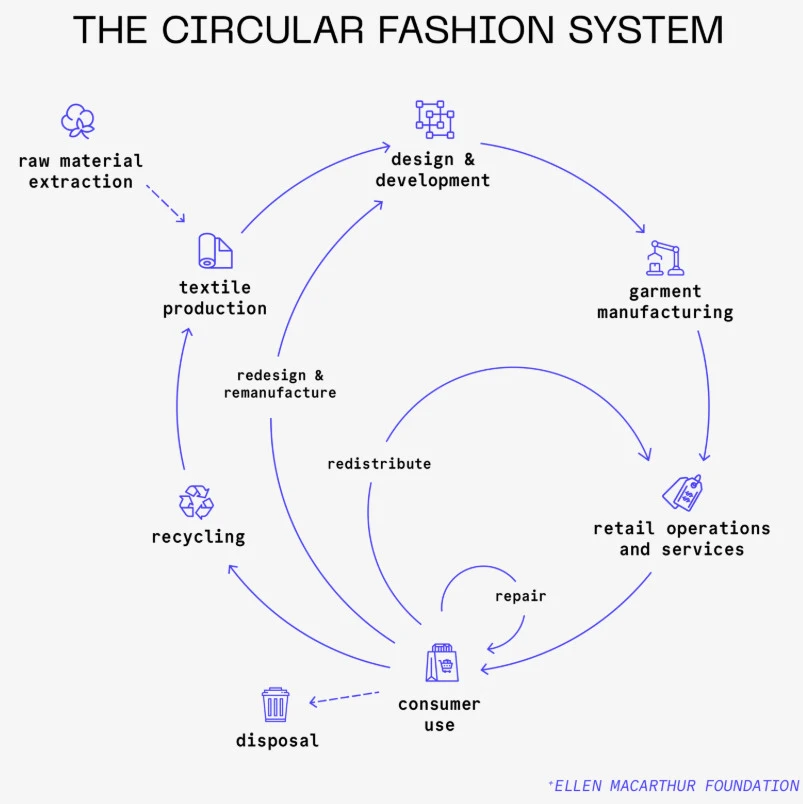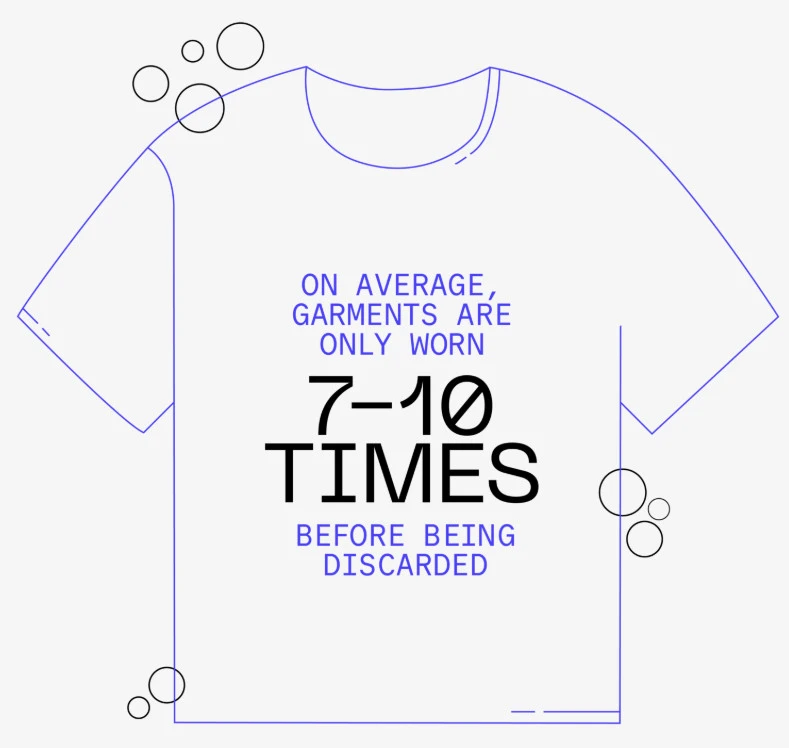
The truth about the cost of clothing
We stand at a crossroads. Our love for fashion is clashing with the well-being of our planet. The fashion industry, as it currently operates, is placing an alarming strain on the environment. A fundamental shift towards sustainable and circular practices is essential to protect our Earth and its finite resources.
Our consumption of clothing has become excessive. We buy 60% more clothing today compared to 15 years ago, pushing fashion brands to produce items at a faster rate and in larger quantities than ever before. This heightened production demands more resources and has significant consequences for our world. On average, a garment is worn only 7-10 times before being discarded.
If we continue on this trajectory, the future appears bleak. By 2050, the sheer volume of textiles could require up to 300 million tonnes of non-renewable resources annually. The fashion industry could consume over 20% of the world’s carbon budget, contributing significantly to the climate crisis. In essence, we’ll have overflowing closets but no planet to wear these clothes on.
The solution lies in a circular fashion system. This involves moving away from the linear “take, make, dispose” model and embracing a system where garments are designed for reuse, remaking, recycling, and ultimately, composting.
This transformation requires a collective effort. Brands must invest in next-generation materials and fiber technologies, integrating these innovations into their production processes and scaling them up. Consumers must make informed choices, building conscious wardrobes and directing demand towards sustainable options. Manufacturers need to prioritize durability and recyclability in their processes. Public officials need to create policies that incentivize sustainable practices. Investors need to support companies driving this change.
Fiber recycling is a crucial component of the solution, but it’s not the sole answer. A complete overhaul of the current system is necessary. The concept of circular fashion is no longer a distant dream; it’s within reach. However, we need everyone’s participation to make it a reality.

Let’s save the planet from the cost of clothing
The fashion industry, with its ever-evolving trends and vibrant creativity, has long been a cornerstone of self-expression. However, beneath its glamorous exterior lies an industry that is significantly harming our planet. The environmental impact of fashion is immense, with its considerable carbon footprint, excessive water usage, and staggering levels of waste. Yet, the rise of the sustainable fashion movement brings a glimmer of hope, promising to mitigate the detrimental effects and champion a new way forward.
Our shopping habits play a crucial role in this transformation. In the era of fast fashion, we are often tempted to buy more for less. However, these cheap garments typically come at the cost of quality and longevity, leading to a cycle of constant replacements and mounting waste. By shifting our focus towards high-quality pieces that endure over time, we can significantly reduce our environmental footprint.
The materials we choose also matter. Many conventional fabrics, such as polyester, are derived from petroleum—a non-renewable resource. Additionally, these fabrics shed microplastics that pollute our waterways. Opting for natural and sustainable materials like organic cotton, hemp, bamboo, or recycled fabrics can make a substantial difference. These alternatives are not only more environmentally friendly but often gentler on our skin as well.
Supporting ethical brands is another vital step. Brands that prioritize ethical and sustainable practices should be our go-to choices. Certifications like Fair Trade, GOTS (Global Organic Textile Standard), and B Corp signify that a brand meets high environmental and social standards. By supporting these brands, we contribute to a system that values both people and the planet.
Second-hand and vintage shopping is another avenue for sustainability. Thrift stores, consignment shops, and online platforms offer a treasure trove of pre-loved garments waiting for a new home. Not only does this reduce waste, but it also brings unique, vintage pieces back into circulation. Embracing these options can be both an environmentally and fashion-conscious decision.
Practicing responsible consumption is key. Before making a purchase, we should ask ourselves if we genuinely need the item. Consider its versatility and how often it will be worn. Adopting a minimalist mindset and focusing on a capsule wardrobe can significantly cut down on the number of clothes we buy, thus minimizing waste and our carbon footprint.
Repairing and upcycling old clothes instead of discarding them is another effective way to promote sustainability. Simple sewing skills can extend the life of garments, while creative upcycling can transform old clothing into something new and stylish. This approach not only reduces waste but also taps into our creativity.
When it’s time to part with a piece of clothing, recycling or donating it ensures it doesn’t end up in a landfill. Textile recycling programs and charity organizations provide avenues for giving old clothes a second life, further reducing overall waste.
Our laundry habits also impact the environment. Washing less frequently, using cold water, and air drying whenever possible can conserve water and energy while extending the life of our clothes. These small changes in our daily routines can collectively make a significant difference.
Educating ourselves and others about the environmental impact of the fashion industry is crucial. By raising awareness and advocating for changes within the industry, we can drive significant progress. Supporting policies that promote sustainable practices and sharing knowledge empowers us to be part of the solution.
In conclusion, saving the planet from the cost of clothing requires a collective effort. By making conscious choices and supporting sustainable practices, we can significantly reduce the environmental impact of our wardrobes. Let’s embrace the sustainable fashion revolution and create a world where style and sustainability coexist harmoniously. Together, we can make a difference.





